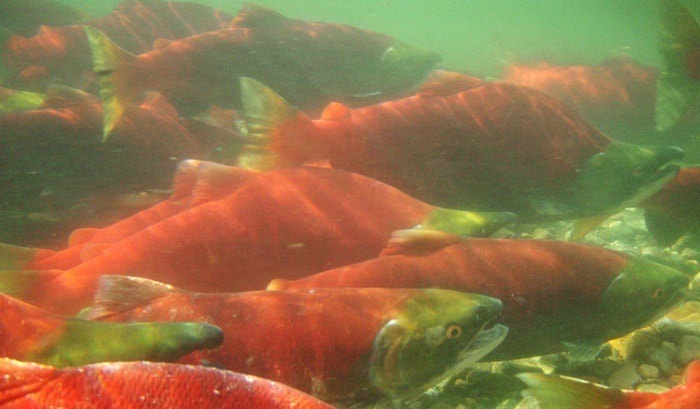Recreational fishing advocates of B.C. came to together to press federal fisheries for a sockeye opening on the Fraser River given the surprisingly large return of the prized salmon.
Reps from the Fraser River Salmon Society, the B.C. Wildlife Federation and five other groups fired off a letter to Fisheries and Oceans (DFO) on Aug. 12 with recommendations for "Immediate" openings in what they call the "public fishery" for sockeye.
"Opening this fishery immediately would have little if any measurable impact on Late run fish, generate between $17 and $31 million in expenditures, increase funding for conservation through licence sales, and most importantly, provide food security by putting locally harvested salmon in British Columbians' freezers," according to the letter to DFO Pacfiic Area Director Steve Gotch.
"This fishery offers a unique opportunity to connect families with nature and the province's rich fisheries heritage."
Signatories on the letter to DFO included: Dean Werk, president of the Fraser Valley Salmon Society, Rod Clapton, president of the BC Drift Fishers, Kevin Estrada, co-chair of the Fraser Valley Angling Guides Association, Owen Bird, executive director Sport Fishing Institute, Jesse Zeman, executive director BC Wildlife Federation, and Louise Pedersen, executive director of the Outdoor Recreation Council of BC.
Despite the fact that no commercial or recreational fisheries have been authorized by DFO, "we believe there are socially significant, biologically low impact fishing opportunities which would minimize risk and allow British Columbians and their families an opportunity to spend time fishing responsibly and sustainably."
Since the Pacific Salmon Commission identified a total allowable catch (TAC) on the Summer run, it means there will be a surplus available for the commercial and recreational sectors to harvest after enough spawners return to their natal streams.
No one expected that, and it's really good news for all fishers, the groups argue.
The pre-season estimate of 2.1 million sockeye has more than doubled to a run size of 4.8 million adopted for in-season count of the Summer run, which is one of several Fraser River sockeye runs, that include the Early Stuarts, the Early Summer, Summer and Late run.
Given the current in-season numbers the groups estimate a recreational sockeye fishery harvest of between 10,000 and 30,000 fish would be sustainable.
This is based on similar numbers from a few years ago when the 2022 run size estimate of 6.6 million was and 11,000 fish were harvested by anglers.
They know that the hesitance to open fishing to anglers on the part of DFO management is about the Late runs comingling with Summer-run fish.
"We recognize the constraint for a fishery on Summers is the possibility of exceeding the maximum allowable exploitation rate of 10 per cent on Late run sockeye, which, based on a current run size, equates to 47,000 fish," according to their letter to DFO.
"Based on DFO creel survey results from previous years a negligible proportion of the 10 per cent of the maximum exploitation for Lates would be harvested by the public fishery."
The groups are urging DFO to take these steps, with accompanying rationale:
• Opening a fishery in the Fraser River upstream of Lytton immediately would have no impact on Lates
• Opening a lower Fraser River fishery immediately would have negligible impact on Late runs (less than a few hundred sockeye)
• Opening a marine Sockeye fishery immediately is low risk and would result a negligible impact on Late runs
• As the proportion of Lates increases, the in-river fishery could be moved upstream of the Harrison to avoid Birkenhead and Weaver stocks
The groups say that unlike with the commercial sector which can't navigate up river to shift fishing openings, anglers can fish different parts of the river, from the mouth to the up-river sections and have no discernible or statistical impact on the late run.
The real challenge is the urgency, since the longer they wait, the more Late run fish will be in the river.
Their window of opportunity however "is highly time sensitive," the letter-writers added, "as the proportion of Late run sockeye in the lower Fraser and marine approach areas will increase over time.
"Given the negligible impacts in comparison to the significant social, food security, and economic the significant social, food security and economic benefits to British Columbians, we believe it should proceed immediately."
